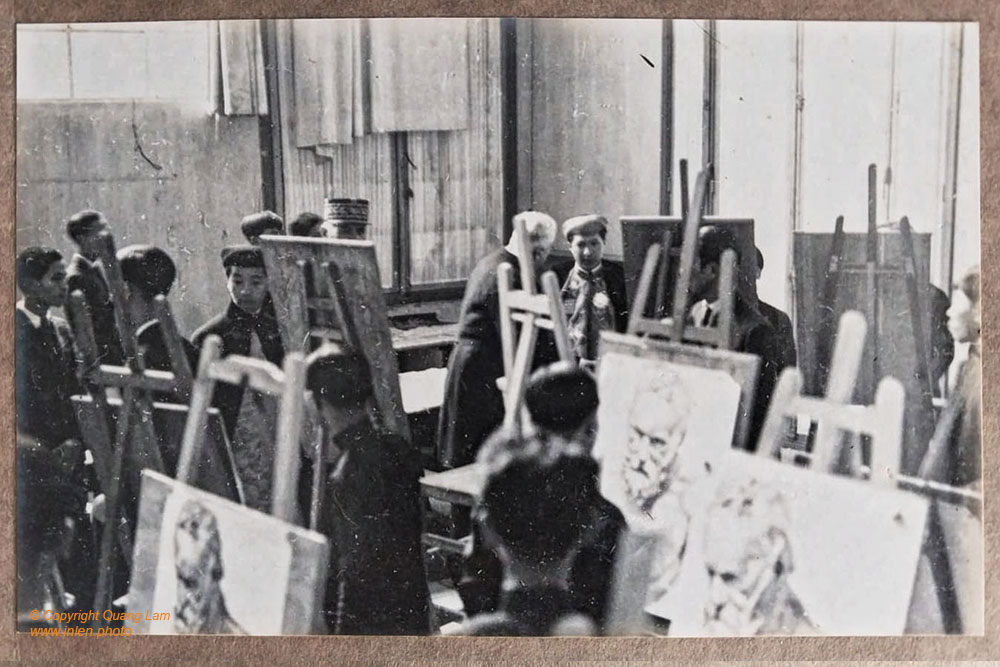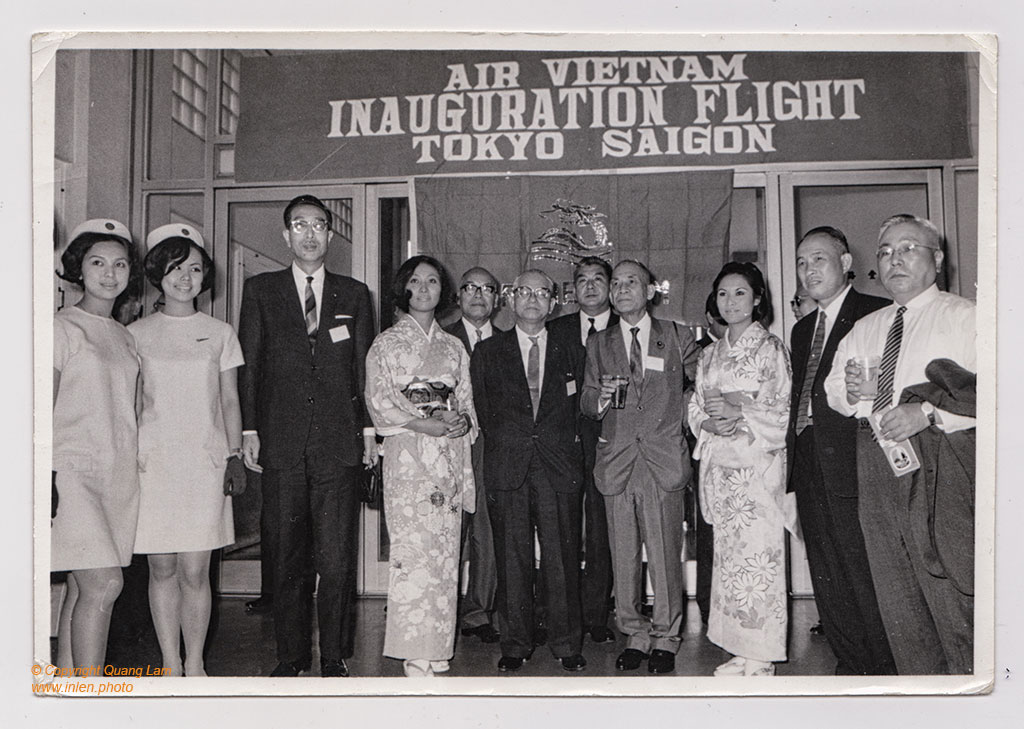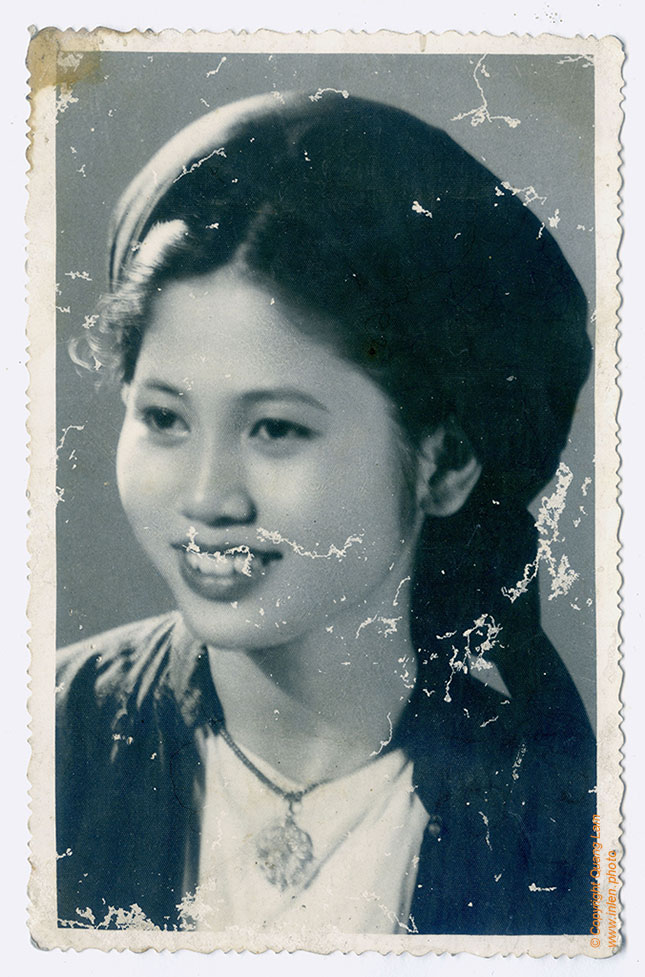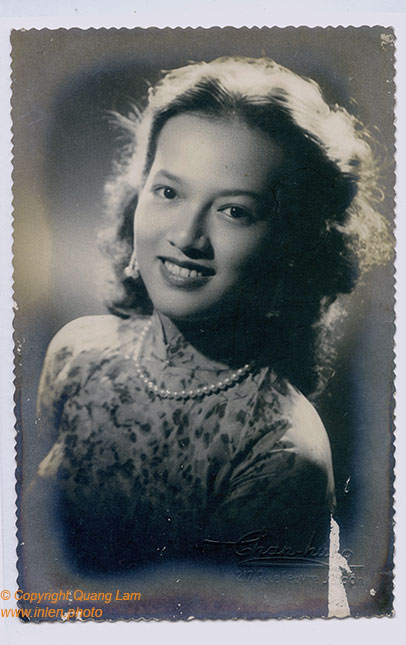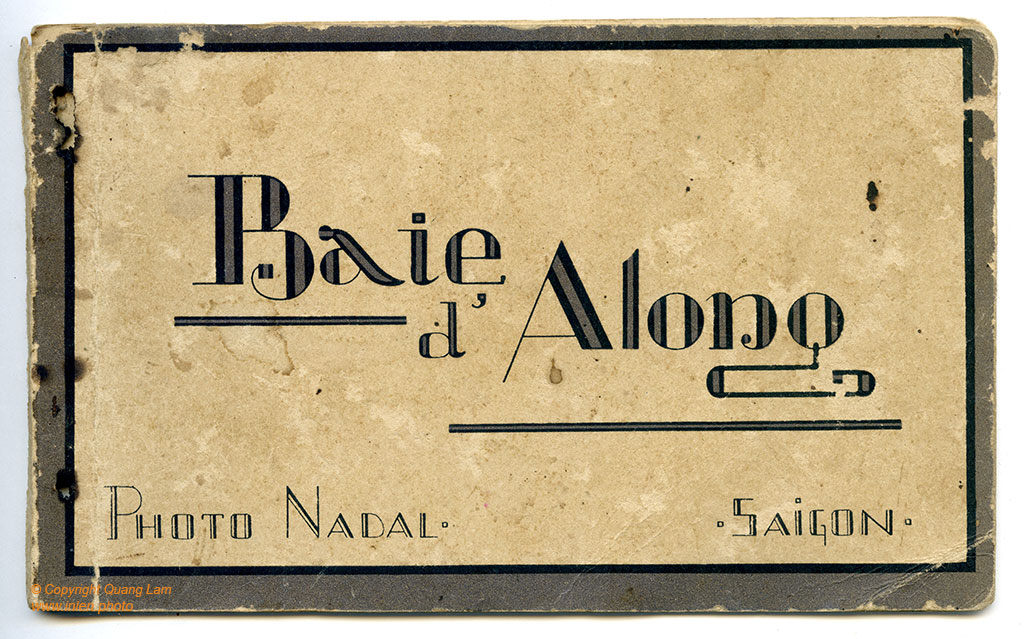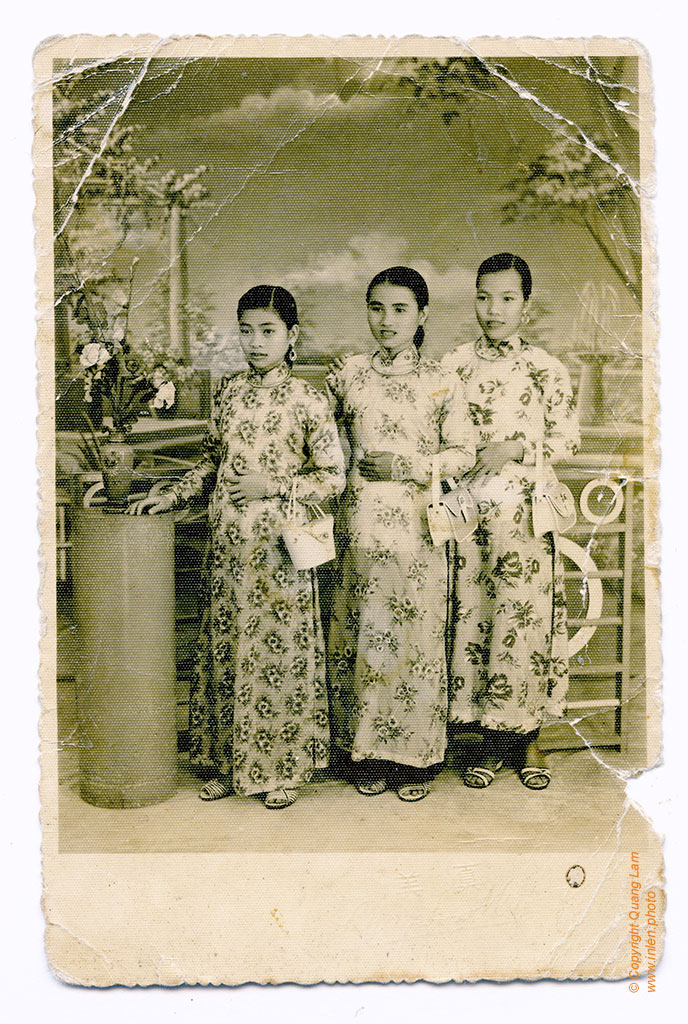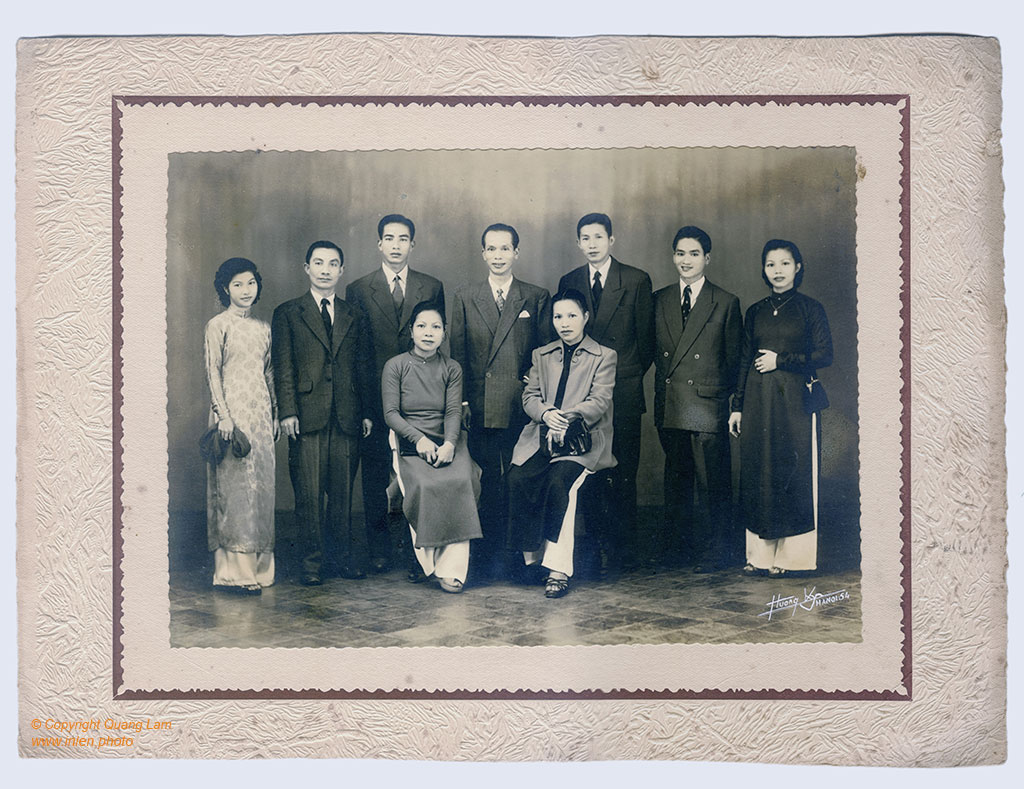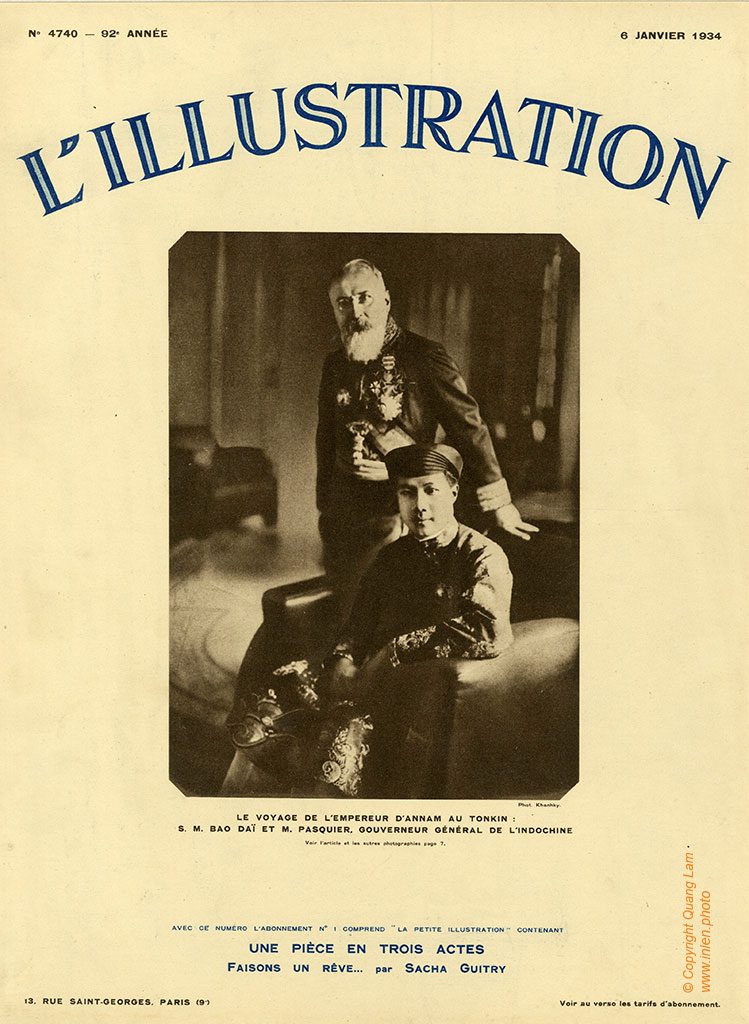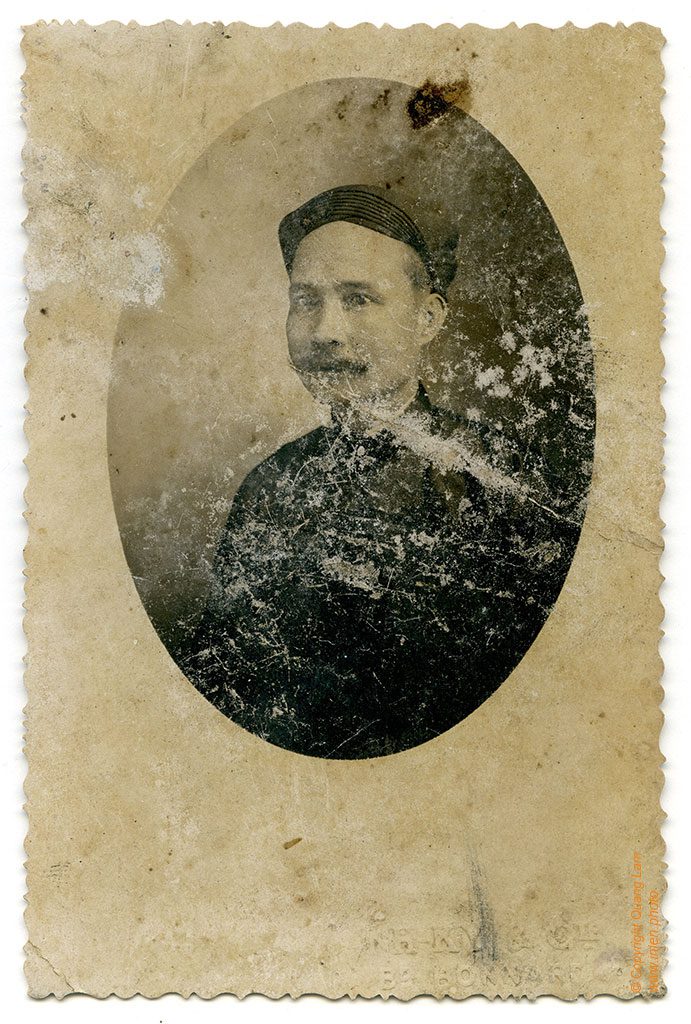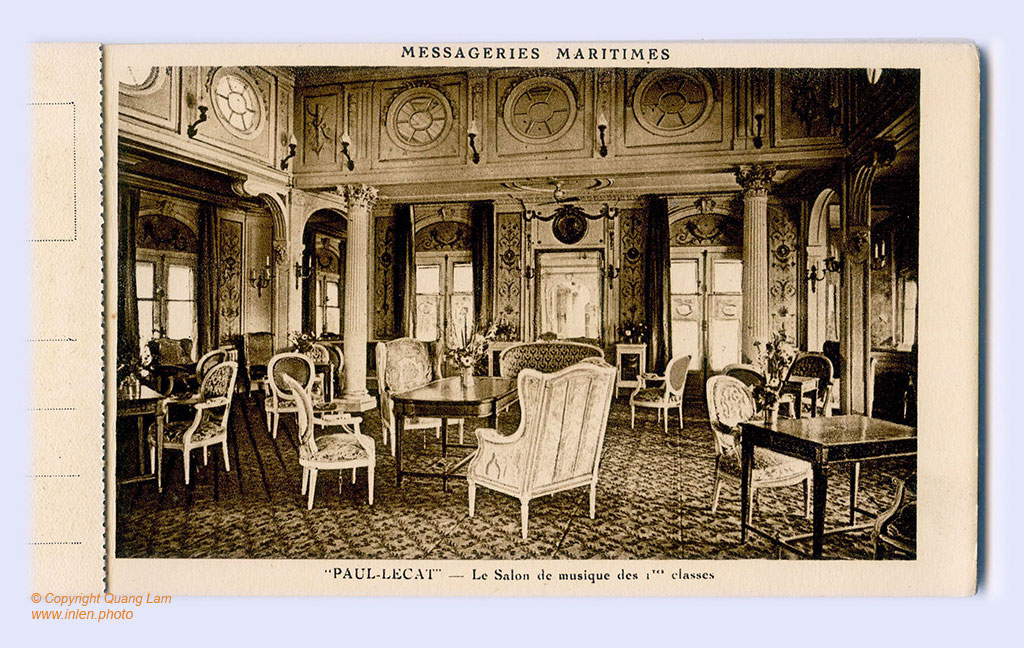This never published series of photos are taken from the album “”Respectful homage of the house Huong Ky Photo to Mr. The Minister of National Education in memory of the trip of H.M BAO DAI in Tonkin”.
Gallery Inlen Photo is proud to be the first to show them publically in collaboration with the French galerie Vincent Joly dedicated to Indochina arts for the the centenary of the founding of Indochina School of Fine Arts (1924-2024) now the University of Fine Arts of Hanoi.
[…]
INTERNATIONAL FLIGHTS – PERIOD 1951 – 1962
Vietnam Airlines used part of its commercial rights to develop international routes to Phnom Penh, Bangkok, Vientiane, Hong Kong and Singapore, which Air France has reestablished from 1946 to 1949.
In 1952, by DC-3, there was a daily flight to Saigon-Phnom Penh, a weekly flight to Saigon-Bangkok, then a seat added to Siem Reap around 1956, two flights to Saigon-Seno-Vientiane; By DC-4, there were two weekly flights to Saigon-Hanoi-Hong Kong and Saigon-Haiphong-Hong Kong,
[…]
Migration and the Geneva Accords
After the 1954 Geneva Accords divided Vietnam into North and South, there was a 300-day period (ending on May 18, 1955) during which Vietnamese people could freely choose their place of residence.
A massive migration occurred, with approximately 1 million people moving from the north to the south and around 50,000 people moving from the south to the north.
The unexpected migration prompted the North Vietnamese government to block roads,
[…]
The portraits in this collection were given by students to their professor at the end of their instruction in the 50s. The written words on the back primarily serve as a formal farewell and provide information about their names and the dates, allowing us to identify the individuals. Fortunately, within one specific portrait, the student also included the name of the Nguyen Van Khue School.
Professor Huỳnh Công Ân says : “From its inception in 1940, Nguyen Van Khue School stood as one of the largest private schools in Cochinchina during the French colonization period.
[…]
Fernand Nadal, born in Algeria, arrived in Saigon in the 1920s. His first advertisement in the magazine Indochine française (1922) described his activities as follows: “Art Photographie—Photography for business” and “Publishing: postcards, photo albums, and documentaries on Cochinchina, Cambodia, and Annam.”
Unlike other studios that focused primarily on portraits, Nadal’s work provided a documentary perspective of that era. He published over 2000 photos, with notable albums including:
- Ruines d’Angkor: A collection of photographs showcasing the ancient temples of Angkor.
[…]
For the Indochina period, historian François Drémeaux reveals an intriguing fact: Hong Kong served as the first harbor of French Indochina. This choice was influenced by several factors, with one of the primary attractions being the city’s favorable taxes and free port system.
The Vietnamese Administration of the Nguyen Dynasty also recognized this advantage. In 1865, they dispatched Dr. Dang Huy Tru on a Chinese mission to explore Hong Kong’s current development. At that time,
[…]
The name of Huong Ky Photo is more associated to the history of cinema in Vietnam than to Photography.
Located in Hang Trong Street (Rue des tambours), Hanoi, the studio photo was established in 1905 by Mr. Nguyen Lan Huong (1887 – 1949).
This street is famous for the production of a specific woodcut paintings. The craftsman only prints the black outlines of the image, then will finish the details by hand.
[…]
Text from the article
THE VISIT OF THE EMPEROR OF ANNAM TO TONKIN
We mentioned, in our last issue, the visit that the Emperor of Annam Bao Daï made to Tonkin during the first half of December. We have since received some new photographs which illustrate with a picturesque commentary this study trip of the young sovereign, the impact of which was considerable in all the cities and regions he traveled.
[…]
Khanh Ky’s real name is Nguyen Dinh Khanh (1874-1946), opened a photography studio in 1892 on Hang Da street. The business being successful he opened many studios in Hanoi, Haiphong, Saigon (1907, 1924) even in China at Guangzhou (1924).Unlike other photographers, he attached particular importance to train his operators who mainly came from Lai Xa village, in Ha Dong province who is considered as considered the cradle of Vietnamese photography.
In 1910, Khanh Ky went to France to study photography.
[…]
The steamliner began his career on September 22, 1912 on the Far East line. In 1914, it was, with its 13,000 gross tonnage, the largest and most luxurious of the Company’s liners, the only one able to offer “luxury” cabins, equivalent to the North Atlantic lines.
Some excerpts of the travel story on Jeanne Marie Méchin aboard the Paul Lecat in November 1923 between Marseille and Saigon. These letters take a month to reach France till the France-Indochina air mail link reduced the time to one week.
[…]
